Concorde, the fastest commercial plane, could maintain Mach speed up to 2.04 (2,170 km/hr, 1350 mph). However, it was retired in 2003. NASA X-43 A maintained the highest speed of Mach 9.68 (10,870 km/h), about five times greater than Concorde. However, neither of these aircraft saw commercial production. Commercial aircraft operate at speeds less than that of sound. Besides commercial ones, there are cargo aircraft like the amazingly shaped Airbus Beluga, designed with transport in mind and not as fast. All different types of aircraft have different top speeds. But which aircraft are the fastest in the world? Let’s find out.
10. General Dynamics F-111 Aardvark (Mach 2.5)

General Dynamics F-111 Aardvark was a supersonic long-range, multi-featured combat aircraft that entered the U.S. Air Force in 1967 as a fighter bomber with the Navy’s need. Its wings are straight for take-offs and landings and for controlling flight speed.
This aircraft, with its remarkable ability to track and designate ground targets, played a pivotal role in Operation Desert Storm, demonstrating its effectiveness. It was a trusted ally in the USAF, NASA, and RAAF, serving in aerial surveillance, combat, testing, and bombing across different eras. Experience its power here: https://youtu.be/sAevhXdx6Yg
This aircraft also served with NASA at Andrew’s airbase in a joint program with the U.S. Air Force called Advanced Fighter Technology Integration (AFTI). It has been repainted to display at the airbase’s museum and had an active role in the Vietnam War, but due to some technical issues, it was never deployed to the Navy. It was portrayed in a 1965 room-sized pop art painting, and the art is now in the Museum of Modern Art in NYC, U.S. Magnificent roaring sound of it is on the Voyager Golden record.
Specifications of the General Dynamics F-111 Aardvark
| First Flight | 21 December, 1964 |
| Maximum Speed | 1,434 kn (1,650 mph, 2,656 km/h) at altitude
795 kn (915 mph; 1,472 km/h) / Mach 1.2 at sea level |
| Maximum Take-off weight | 100,000 lb (45,359 kg) |
| Service Ceiling | 66,000 ft (20,000 m) |
| Engines; Power | 2; 17,900 lbf (80 kN) thrust each dry,
25,100 lbf (112 kN) with afterburner |
| Engine model | Pratt & Whitney TF30-P-100 |
| Wingspan | 63 ft (19 m) |
9.McDonnell Douglas F-15 Eagle (Mach 2.5)
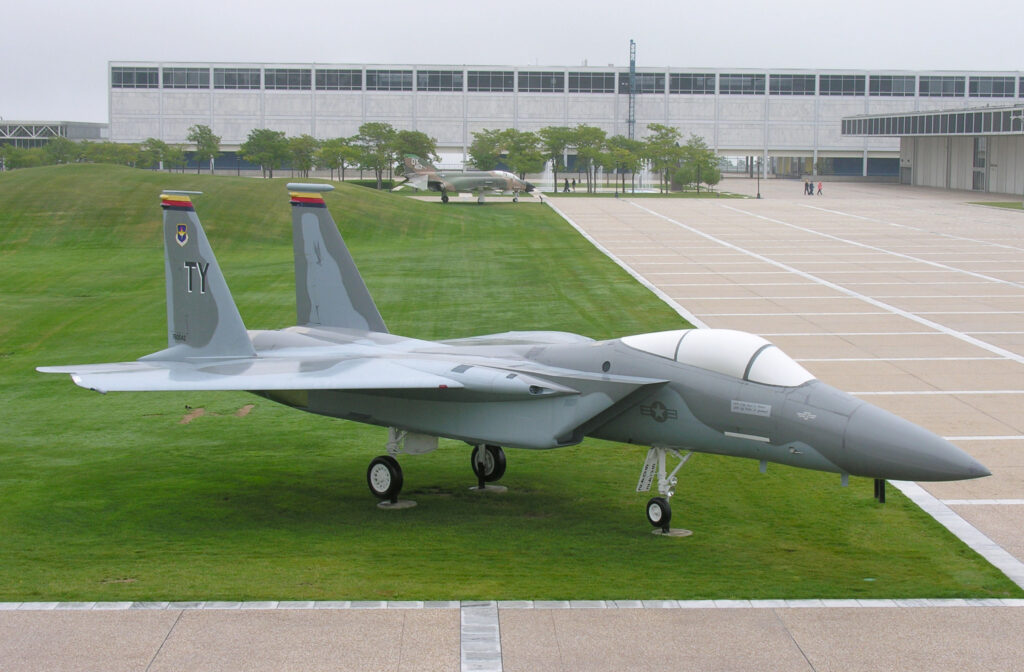
The McDonnell Douglas F-15 Eagle, designed by McDonnell Douglas(Boeing), is also known as the Boeing F-15 Eagle. It is the twin-engine American fighter jet’s fastest fighter jet in service, having over 100 victories with zero losses in aerial combat. The US has exported this masterpiece to Israel, Saudi Arabia, Japan, and many other countries.
Its semi-monocoque fuselage is made from all-metal materials, and since the 1980s, it has begun using advanced superplastically formed titanium components. Due to its low weight-to-wing area ratio and high thrust-to-weight ratio, it can control sharpness, speed, drag, and combat weight. It is expected to live in the USAF until the 2030s, with newer models being manufactured for various customers.
It has a spine-mounted air brake, tricycle landing gear, variable intake ramps, a one-piece windscreen, a large canopy for better visibility, and a complete field view for pilots. The research involves applying an “Intelligent Flight Control System.” There is precise use of improved APG-63(V)2 and (V)3 active electronically scanned array (AESA) radar. It had been the subject of the movie “Fighter Pilot: Operation Red Flag” and a book called “Fighter Wing: A Guided Tour of an Air Force Combat Wing.”
Specifications of the McDonnell Douglas F-15 Eagle:
| First Flight | 27 July, 1972 |
| Maximum Speed | Mach 2.5 (1,650 mph, 2,655 km/h) at high altitude
Mach 1.2, 800 kn (921 mph; 1,482 km/h) at sea level |
| Maximum Take-off weight | 68,000 lb (30,844 kg) |
| Service Ceiling | 65,000 ft (20,000 m) |
| Engines; Power | 2; 14,590 lbf (64.9 kN) thrust each dry,
23,770 lbf (105.7 kN) with afterburner |
| Engine model | Pratt & Whitney F100-PW-220 |
| Wingspan | 42 ft 10 in (13.06 m) |
| Fuel Capacity | 13,455 lb (6,103 kg) internal |
8.Mikoyan MiG-31 Foxbat (Mach 2.83)
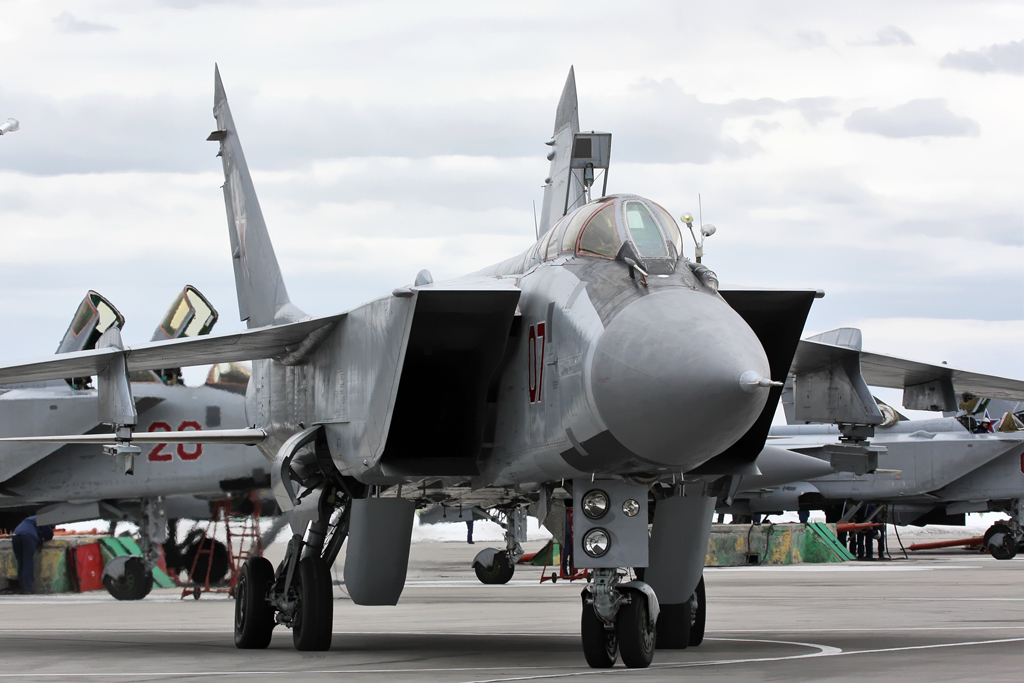
The fastest operational combat aircraft, a supersonic interceptor designed by the Mikoyan Design Bureau based on design elements of the MiG-25, was operated by the Russian Aerospace Forces and Kazakh Air Defense Forces(which retired the type in 2023). Mikoyan MiG-31 Foxbat has a large twin-engine with shoulder-mounted wing and twin vertical tail fins.
It was the first aircraft with a passive electronically scanned array(PESA) designed to detect and destroy low-flying cruise missiles, helicopters, and UAVs where radar is matched with an infrared search and track(IRST) system. It played a great role in providing air defense in GBAD areas.
The actual consecutive production began in 1979. The Russian Defence Ministry expects it to stay in service until 2030. Development for the replacement of MiG-31 was planned to start in 2019, and the effect was due to the design of a Mach 4 capable MiG-41 that began in April 2013. Its variants are MiG-31M, MiG-31D, MiG-31 LL, MiG-31 01 DZ, MiG-31B, MiG-31E, MiG-31BS, MiG-31BM, MiG-31BSM, MiG-31K, MiG-31F, MiG-31 FE, MiG-31I (Ishim), MiG-31 (Izdeliye 08), MiG-31I, etc.
Specifications of the Mikoyan MiG-31 Foxbat:
| First Flight | 16 September, 1975 |
| Maximum Speed | 3,000 km/h (1,900 mph, 1,600 kn) / Mach 2.83 at 21,500 m (70,500 ft)
1,500 km/h (930 mph; 810 kn) / Mach 1.21 at low altitude |
| Maximum Take-off weight | 46,200 kg (101,854 lb) |
| Service Ceiling | 25,000 m (82,000 ft) |
| Engines; Power | 2; 93 kN (21,000 lbf) thrust each dry,
152 kN (34,000 lbf) with afterburner |
| Engine model | Soloviev D-30F6 |
| Wingspan | 13.456 m (44 ft 2 in) |
| Fuel Capacity | 35,550 lb (16,130 kg) |
7. XB-70 Valkyrie (Mach 3.02)
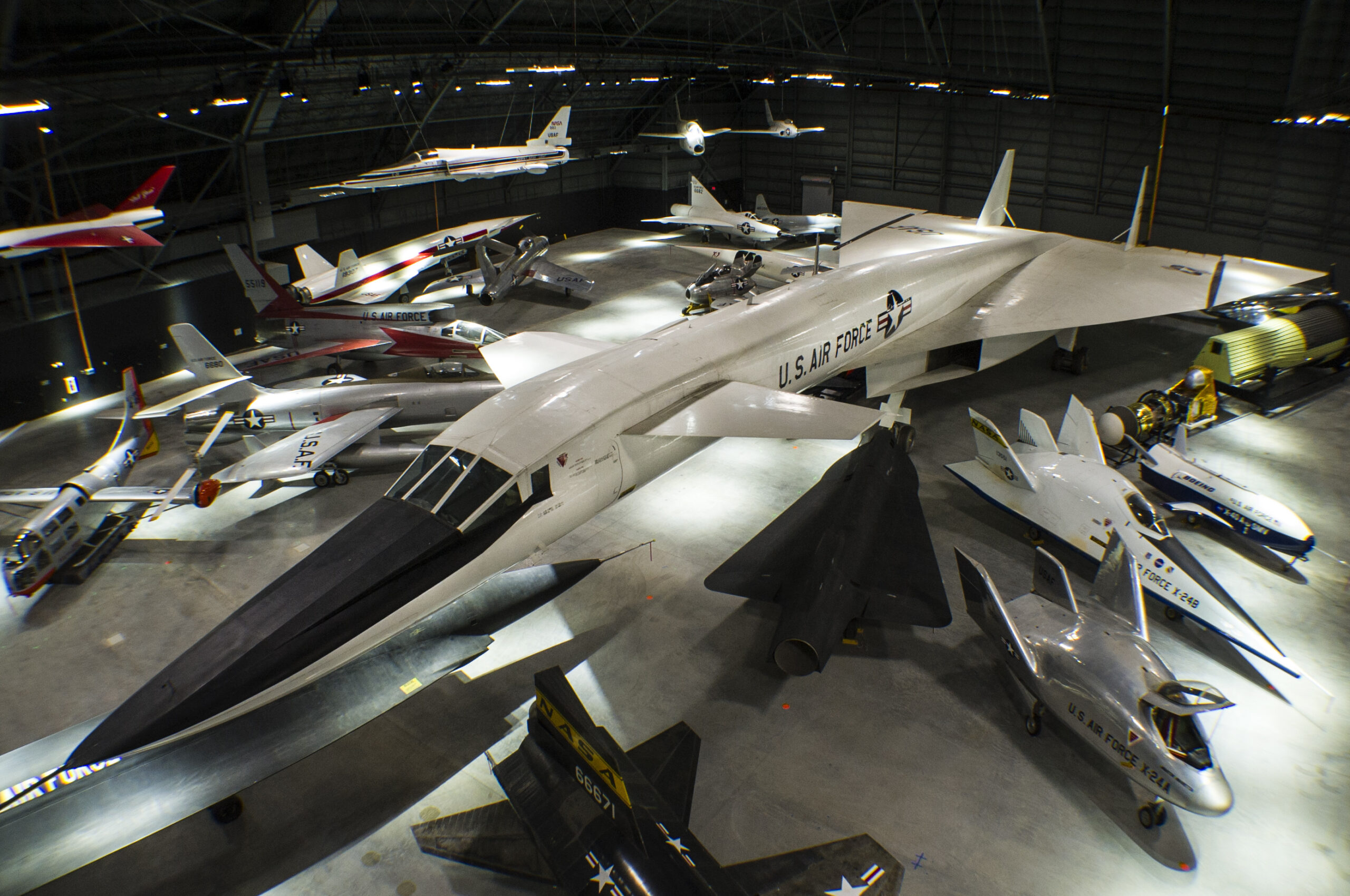
XB-70 Valkyrie is a product of the United States Air Force Strategic Air Command. It was designed in the late 1950s by NAA(North American Aviation). It has six engines and delta wings to replace the old B-52 Stratofortress and B-58 Hustler. North America and the USAF released the first drawing of its design in early 1960.
XB-70 Valkyrie was made to study aerodynamics, propulsion, and large supersonic transports. Fuel is used for cooling using heat exchangers, and nitrogen was injected during refueling to reduce the chance of autoignition.
It had its last supersonic flight on 17 December 1968 and finally arrived at Wright-Patterson Air Force Base (National Museum of the United States Air Force) on 4 February 1969 for museum display near Dayton, Ohio. In October 2015, it was moved to the fourth hangar at the museum’s main campus.
Specifications of XB-70 Valkyrie:
| First Flight | 21 September, 1964 |
| Maximum Speed | 1,787 kn (2,056 mph, 3,310 km/h) |
| Maximum Take-off weight | 542,000 lb (245,847 kg) |
| Service Ceiling | 77,350 ft (23,580 m) |
| Engines; Power | 6; 19,900 lbf (89 kN) thrust each dry,
28,000 lbf (120 kN) with afterburner |
| Engine model | General Electric YJ93 |
| Wingspan | 105 ft 0 in (32.00 m) |
| Fuel Capacity | 300,000 pounds (140,000 kg) / 46,745 US gal (38,923 imp gal; 176,950 L) |
6. Bell X-2 Starbuster (Mach 3.2)
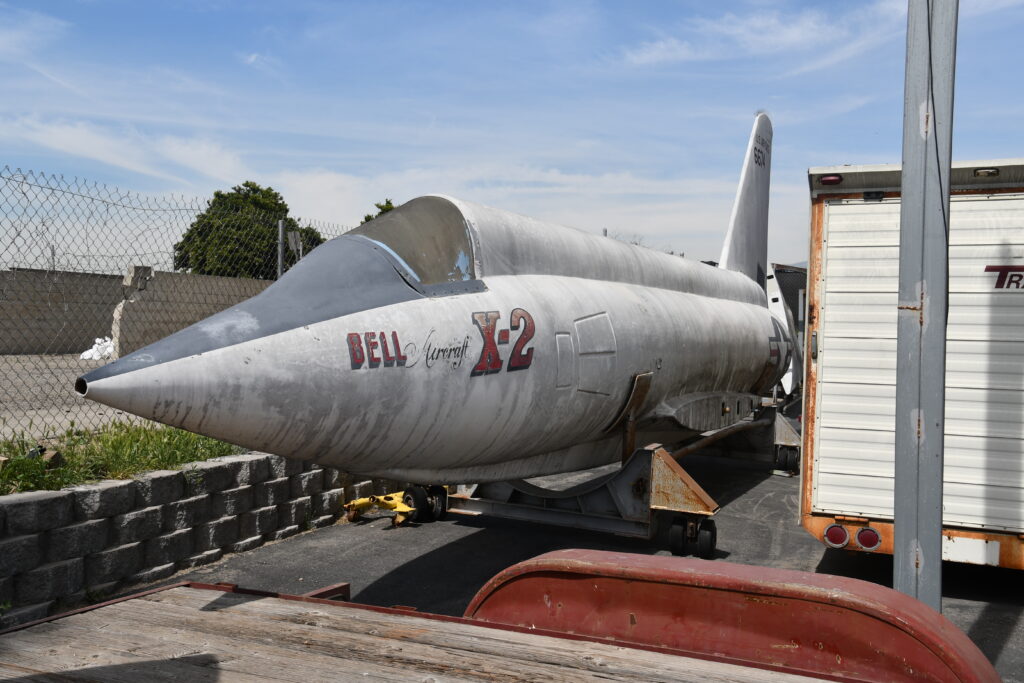
Bell X-2 Starbuster was a rocket-powered, swept-wing research aircraft developed to explore aerodynamic problems of supersonic flight by Bell Aircraft Corporation, the U.S. Air Force, and the NACA in 1945. In 1946, its model was launched and tested to collect control and stability data. NACA itself does the scientific instrumentation of it.
Made of stainless steel and k-monel, it was equipped with an escape capsule for the pilot. Pete Everest, who flew over 150 combat missions during World War II, made the first powered X-2 flight on November 18, 1955, igniting only a 5,000-pound-thrust chamber with a Mach speed of 0.95. Another flight happened on March 24, 1956, igniting a 10,000-pound-thrust rocket chamber. His final X-2 flight made him the “fastest man alive.” One of its types was lost in a flight explosion, killing one pilot in 1953.
Specifications of Bell X-2 Starbuster:
| First Flight | 27 June, 1952 (first drop glide)
18 November, 1955 (first powered flight) |
| Maximum Speed | 2,094 mph (3,370 km/h, 1,820 kn) |
| Maximum Take-off weight | 24,910 lb (11,299 kg) |
| Service Ceiling | 126,200 ft (38,500 m) |
| Engines; Power | 1; 15,000 lbf (67 kN) thrust at sea level |
| Engine model | Curtiss-Wright XLR25 |
| Wingspan | 32 ft 3 in (9.83 m) |
5. Mikoyan MiG-25 Foxbat ( Mach 3.2)
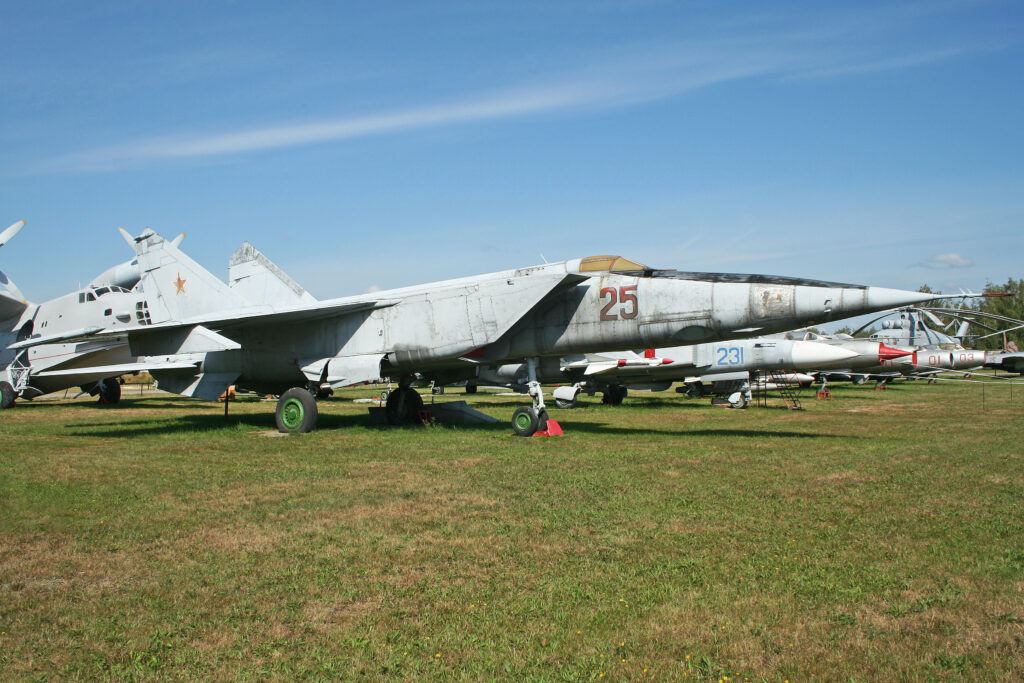
As a supersonic interceptor and reconnaissance aircraft, Mikoyan MiG-25 Foxbat is the fastest military aircraft to enter service. It is also one of the few combat aircraft built using stainless steel with a large wing area and powerful engines by the Soviet Union’s Mikoyan-Gurevich bureau.
It was designed to meet the needs of the Soviet Air Defense Forces as a high-speed and high-altitude interceptor to counter the threat of the North American XB-70 Valkyrie strategic bomber and entered service in 1970. A long-pointed nose section with a radar system could detect and engage enemy aircraft at ranges up to 75 miles.
Incorporated with various features to improve its survivability in combat, it was provided with four air-to-air missiles, a single 23mm cannon for self-defense, armor protection for the pilot, and its engines to resist damage from enemy fire.
It is still the symbol of Cold War-era aviation technology.
Specifications of Mikoyan MiG-25 Foxbat:
| First Flight | 6 march, 1964 (60 years ago) |
| Maximum Speed | 3,000 km/h (1,900 mph, 1,600 kn) / Mach 2.83 at high altitude |
| Service Ceiling | 20,700 m (67,900 ft) with four missiles
24,000 m (78,740 ft) with two |
| Engines; Power | 2; 73.5 kN (16,500 lbf) thrust each dry,
100.1 kN (22,500 lbf) with afterburner |
| Engine model | Tumansky R-15B-300 |
| Wingspan | 14.01 m (46 ft 0 in) |
4. Lockheed YF-12 (Mach 3.2)
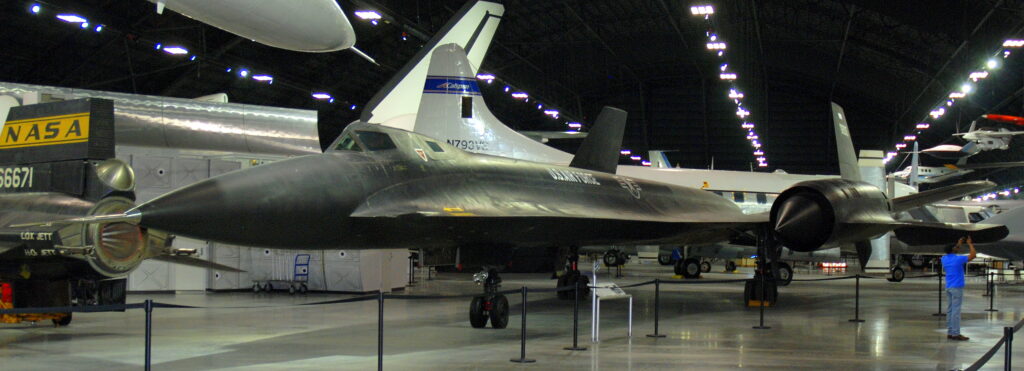
Lockheed YF-12 , twin-seat version of Lockheed A-12 operated by the Central Intelligence Agency was provided with the Hughes AN/ASG-18 fire-control radar and AIM-47 Falcon to defend against supersonic bombers. It is the world’s largest manned interceptor.
It served NASA and the Air Force, with a total of 450 flight hours in its 9-year service as a reconnaissance aircraft maintaining a cruise speed of over Mach 3.
Out of 3 YF-12s, only one lonesome aircraft is left.
Specifications of Lockheed YF-12:
| First Flight | 7 August , 1963 |
| Maximum Speed | 2,275 mph (3,661 km/h, 1,977 kn) at 80,000 ft (24,000 m) |
| Maximum Take-off weight | 140,000 lb (63,504 kg) |
| Service Ceiling | 90,000 ft (27,400 m) |
| Engines; Power | 2; 20,500 lbf (91 kN) thrust each dry,
31,500 lbf (140 kN) with afterburner |
| Engine model | Pratt & Whitney J58 (JTD11D-20A) |
| Wingspan | 55 ft 7 in (16.95 m) |
3.Lockheed SR-71 Blackbird (Mach 3.4)
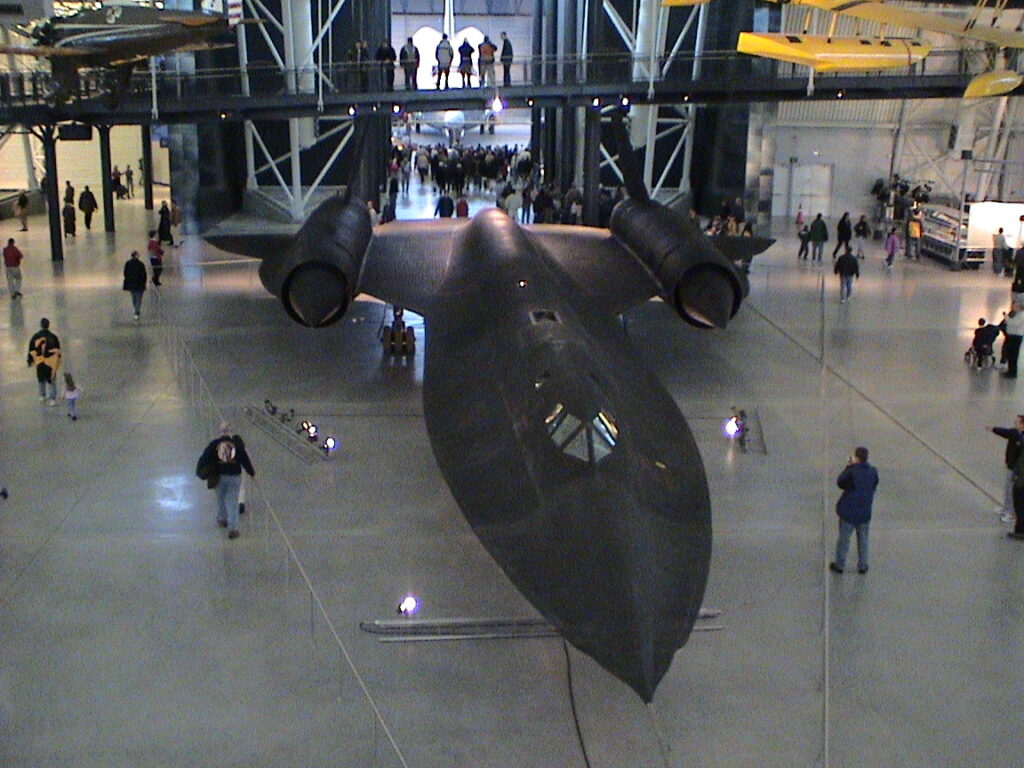
Once flying from Los Angeles to Washington D.C on its last flight, this Lockheed SR-71 Blackbird, world’s fastest jet-propelled aircraft set a speed record of 3,418 kmph(2,124 miles per hour). Titanium was used for 85% of its structure, and other polymer composite materials to withstand the heat generated by sustained high-speed flight.
Having 2,800 hours of flight time in almost 24 years of service, scientists once used it in a program to study ways of reducing sonic boom overpressures by minimizing sharp thundering on the ground and its startle effect. It was also used as a spy plane to tackle enemy territories. This masterpiece was also featured in the movie “Transformers 2: Revenge of the Fallen”.
It could reach coast-to-coast in the United States in an hour. In-flight refueling was required during long-duration flights. Twelve of its kind were lost, of which 11 happened between 1966 and 1972.
Specifications of Lockheed SR-71 Blackbird:
| First Flight | 22 December 1964 |
| Maximum Speed | 1,910 kn (2,200 mph, 3,540 km/h) at 80,000 ft (24,000 m) |
| Maximum Take-off weight | 172,000 lb (78,018 kg) |
| Service Ceiling | 85,000 ft (26,000 m) |
| Engines; Power | 2 ; JT11D-20J 32,500 lbf (144.57 kN)
JT11D-20K 34,000 lbf (151.24 kN) |
| Engine model | Pratt & Whitney J58 (JT11D-20J or JT11D-20K) |
| Wingspan | 55 ft 7 in (16.94 m) |
| Fuel Capacity | 12,219.2 US gal (10,174.6 imp gal; 46,255 L) in 6 tank groups (9 tanks) |
2.North American X-15 (Mach 6.7)
![]()
![]()
![]()
![]()
![]()

North American X-15 used by the US Air Force
North American X-15 was an experimental hyper-sonic rocket-powered aircraft for high-speed and high-altitude research. It achieved the highest speed ever reached as a human-crewed aircraft with the crew in it, which is still unbroken. It was made with heat-resistant alloys and an external fuel tank for better flight time and speed capabilities.
NASA and the U.S. Air Force operated it in the 1960 s. Operated by the Stability Augmentation System, it can send responses to the aerodynamic controls to maintain attitude control.
It was the first to fly Mach of 4,5 and 6 to operate at altitudes above 30,500 m. It could climb up to 4,000 feet per second, and a 1-second delay could cause an accident. In 1967, pilot Pete Knight made the record speed of Mach 6.7.
Specifications of North American X-15:
| First Flight | 8 June , 1959 |
| Maximum Speed | 4,520 mph (7,270 km/h, 3,930 kn) |
| Service Ceiling | 354,200 feet (67 miles) |
| Engines; Power | 2 ; 16,000 pounds-force (71 kN) |
| Engine model | Reaction Motors XLR-11 |
| Wingspan | 22 ft 4 in (6.81 m) |
1.NASA X-43A (Mach 9.6)

Being an experimental hypersonic flight research program, NASA X-43A, known as Hyper-X, had its test flight of the third version on Nov 16, 2004, and achieved the highest speed ever for any aircraft, i.e., mach speed of 9.68. It is 4.74m long and uses a tile-based thermal protection system. It has a control system that provides better aerodynamic control at hypersonic speed. Its engines are air-breathing with fewer moving parts that use gaseous hydrogen fuel. Equipped with a sensor and control system, it prevents the disagreement of supersonic airflow to the engine inlet and other traditional problems.
NASA X-43A was a joint NASA Dryden/Langley conducted under NASA’s Aeronautics and Space Transportation Technology Enterprise and an experimental unmanned aircraft first developed in the late 1990 s. It was the first plane in the series, out of three. Its first flight failed on June 2, 2001, due to a loss of booster control.
Specifications of NASA X-43A:
| First Flight | 2 June, 2001 |
| Maximum Speed | 11,855km/h (7366 mph)(6401kn) |
| Engine model | Dual-mode ramjet/scramjet |
| Wingspan | 5 ft / 1.52 m |
